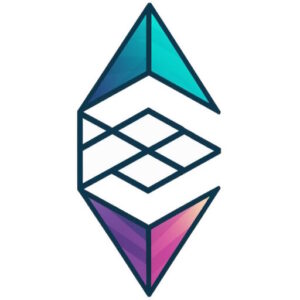Ethereum has emerged as one of the most significant players in the blockchain industry. Launched in 2015 by Vitalik Buterin, Ethereum introduced a revolutionary concept known as smart contracts, which has transformed the way transactions are conducted on the blockchain. With its robust platform and innovative technology, Ethereum has paved the way for decentralized applications (dApps), decentralized finance (DeFi), and non-fungible tokens (NFTs), among other groundbreaking developments. In this article, we will explore the various aspects of Ethereum’s impact on the blockchain industry and beyond.
Ethereum’s innovative smart contract technology revolutionizes blockchain industry
At the heart of Ethereum’s success lies its smart contract technology. Smart contracts are self-executing contracts with predefined rules and conditions that are automatically enforced on the blockchain. These contracts eliminate the need for intermediaries, reduce costs, and increase efficiency in various industries. For example, in the supply chain industry, smart contracts can automate and streamline processes such as tracking shipments, verifying authenticity, and executing payments.
Ethereum’s platform allows developers to create and deploy smart contracts using its native programming language, Solidity. These contracts are stored on the blockchain and can be accessed and executed by anyone with permission. This open and transparent nature of smart contracts on Ethereum has opened up a world of possibilities for industries such as finance, real estate, healthcare, and more.
Ether becomes second most valuable cryptocurrency, shaking up market dominance
Ether (ETH), the native cryptocurrency of the Ethereum network, has gained significant traction in the cryptocurrency market. As of [current date], Ether holds the position of the second most valuable cryptocurrency by market capitalization, just behind Bitcoin. This rise in value has shaken up the dominance of Bitcoin and has positioned Ethereum as a formidable player in the digital currency space.
The market capitalization of Ether has surpassed that of other major cryptocurrencies such as Ripple (XRP), Litecoin (LTC), and Bitcoin Cash (BCH). This surge in value can be attributed to several factors. Firstly, the increasing adoption of Ethereum’s platform by developers and businesses has created a demand for Ether. Additionally, the rise of decentralized finance (DeFi) and the popularity of dApps built on Ethereum have further fueled the demand for Ether.
Decentralized applications built on Ethereum platform disrupt traditional industries
Decentralized applications, or dApps, are applications that run on a decentralized network, such as Ethereum. These applications leverage the power of blockchain technology to provide transparency, security, and immutability. Unlike traditional applications that are controlled by a central authority, dApps operate on a peer-to-peer network, making them resistant to censorship and single points of failure.
Ethereum’s platform has become a breeding ground for innovative dApps that are disrupting traditional industries. For example, projects like Augur, which is a decentralized prediction market platform, have revolutionized the way people make predictions and place bets. Similarly, Golem, a decentralized computing network, allows users to rent out their unused computing power and earn cryptocurrency in return.
Ethereum’s scalability solutions pave the way for mass adoption
One of the challenges faced by Ethereum is scalability. As more users and developers flock to the platform, the network becomes congested, leading to slower transaction times and higher fees. However, Ethereum has been actively working on scalability solutions to address these issues and pave the way for mass adoption.
One proposed solution is Ethereum 2.0, also known as Eth2 or Serenity. This upgrade aims to transition Ethereum from a proof-of-work (PoW) consensus mechanism to a proof-of-stake (PoS) mechanism. PoS is expected to significantly improve scalability by reducing energy consumption and increasing transaction throughput.
Another solution being explored is layer 2 scaling solutions such as state channels and sidechains. These solutions aim to offload some of the transaction processing from the main Ethereum network, thereby reducing congestion and improving scalability.
Ethereum-based decentralized finance (DeFi) transforms traditional financial systems
Decentralized finance, or DeFi, is an emerging trend in the blockchain industry that aims to transform traditional financial systems by leveraging the power of blockchain technology. DeFi applications built on Ethereum enable users to access financial services such as lending, borrowing, and trading without the need for intermediaries.
Ethereum’s platform has become the go-to choice for DeFi projects due to its robust infrastructure and smart contract capabilities. Projects like MakerDAO, Compound, and Aave have gained significant traction in the DeFi space by offering decentralized lending and borrowing services. These platforms allow users to earn interest on their cryptocurrency holdings or borrow against their assets without relying on traditional banks or financial institutions.
Ethereum’s gas fees and network congestion spark debate among users and developers
As Ethereum’s popularity has grown, so have its gas fees and network congestion. Gas fees are the fees paid by users to execute transactions or interact with smart contracts on the Ethereum network. Network congestion occurs when there is a high volume of transactions being processed, leading to slower transaction times and higher fees.
The rising gas fees and network congestion have sparked a debate among users and developers. Some argue that these issues hinder the usability and accessibility of Ethereum, especially for smaller transactions. Others believe that these challenges are temporary and can be addressed through scalability solutions such as Ethereum 2.0 and layer 2 scaling solutions.
Ethereum’s role in the NFT boom and digital art market
Non-fungible tokens, or NFTs, have taken the world by storm, and Ethereum has played a significant role in this boom. NFTs are unique digital assets that can represent ownership of items such as artwork, collectibles, virtual real estate, and more. These tokens are stored on the Ethereum blockchain, providing proof of ownership and authenticity.
Ethereum’s platform has become the preferred choice for artists, creators, and collectors to buy, sell, and trade NFTs. Platforms like OpenSea and Rarible have gained popularity as marketplaces for NFTs built on Ethereum. The digital art market has experienced a surge in interest and sales, with artists selling their digital creations for millions of dollars.
Ethereum’s community-driven governance model sets a new standard for decentralized networks
Ethereum’s governance model is unique in the blockchain industry. Unlike traditional centralized systems where decisions are made by a central authority, Ethereum’s governance is community-driven. This means that decisions regarding upgrades, protocol changes, and network improvements are made through a consensus among the community members.
This community-driven governance model has several benefits. It ensures that decisions are made in a transparent and inclusive manner, allowing all stakeholders to have a say in the future of the network. It also promotes decentralization and reduces the risk of censorship or manipulation by a single entity.
However, this model also presents challenges. The decentralized nature of decision-making can lead to disagreements and delays in implementing necessary upgrades or changes. It requires active participation from community members and coordination among various stakeholders.
Ethereum’s partnerships and collaborations with major corporations signal mainstream adoption
Ethereum’s partnerships and collaborations with major corporations have played a significant role in driving mainstream adoption of blockchain technology. Companies such as Microsoft, JPMorgan Chase, and IBM have recognized the potential of Ethereum’s platform and have partnered with the Ethereum Foundation to explore its applications in various industries.
These partnerships have resulted in the development of enterprise-grade solutions built on Ethereum. For example, Microsoft Azure offers a suite of tools and services for developers to build, test, and deploy Ethereum-based applications. JPMorgan Chase has developed Quorum, an enterprise-focused version of Ethereum, for secure and private transactions.
Ethereum’s impact on the future of blockchain technology and beyond
Ethereum’s impact on the future of blockchain technology cannot be overstated. Its innovative smart contract technology, scalability solutions, and community-driven governance model have set a new standard for decentralized networks. Ethereum has paved the way for the development of dApps, DeFi, NFTs, and other groundbreaking applications that have the potential to transform industries beyond finance.
In addition to its impact on the blockchain industry, Ethereum has the potential to drive innovation in other sectors such as healthcare, supply chain management, and governance. Its transparent and secure nature makes it an ideal platform for building trust and efficiency in various systems.
Ethereum has emerged as a game-changer in the blockchain industry, revolutionizing the way transactions are conducted and applications are built. Its smart contract technology, scalability solutions, and community-driven governance model have positioned Ethereum as a leader in the space. With its partnerships with major corporations and its impact on mainstream adoption, Ethereum is poised to shape the future of blockchain technology and drive innovation in various industries. As we look ahead, it is clear that Ethereum’s potential is limitless, and its impact will extend far beyond the blockchain industry.





